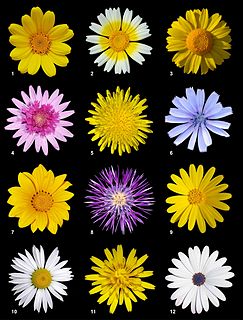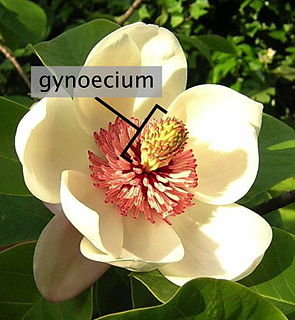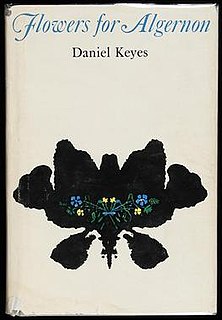
Asteraceae or Compositae, is a very large and widespread family of flowering plants (Angiospermae).

In botany, a fruit is the seed-bearing structure in flowering plants formed from the ovary after flowering.

The flowering plants, also known as angiosperms, Angiospermae, Magnoliophyta, or, more colloquially, flowers, are the most diverse group of land plants, with 64 orders, 416 families, approximately 13,000 known genera and 300,000 known species. Like gymnosperms, angiosperms are seed-producing plants. However, they are distinguished from gymnosperms by characteristics including flowers, endosperm within the seeds, and the production of fruits that contain the seeds. Etymologically, angiosperm means a plant that produces seeds within an enclosure; in other words, a fruiting plant. The term comes from the Greek words angeion and sperma ("seed").

The Orchidaceae are a diverse and widespread family of flowering plants, with blooms that are often colourful and fragrant, commonly known as the orchid family.

A rose is a woody perennial flowering plant of the genus Rosa, in the family Rosaceae, or the flower it bears. There are over three hundred species and thousands of cultivars. They form a group of plants that can be erect shrubs, climbing, or trailing, with stems that are often armed with sharp prickles. Flowers vary in size and shape and are usually large and showy, in colours ranging from white through yellows and reds. Most species are native to Asia, with smaller numbers native to Europe, North America, and northwestern Africa. Species, cultivars and hybrids are all widely grown for their beauty and often are fragrant. Roses have acquired cultural significance in many societies. Rose plants range in size from compact, miniature roses, to climbers that can reach seven meters in height. Different species hybridize easily, and this has been used in the development of the wide range of garden roses.

An inflorescence is a group or cluster of flowers arranged on a stem that is composed of a main branch or a complicated arrangement of branches. Morphologically, it is the modified part of the shoot of seed plants where flowers are formed. The modifications can involve the length and the nature of the internodes and the phyllotaxis, as well as variations in the proportions, compressions, swellings, adnations, connations and reduction of main and secondary axes. Inflorescence can also be defined as the reproductive portion of a plant that bears a cluster of flowers in a specific pattern.

Petals are modified leaves that surround the reproductive parts of flowers. They are often brightly colored or unusually shaped to attract pollinators. Together, all of the petals of a flower are called a corolla. Petals are usually accompanied by another set of special leaves called sepals, that collectively form the calyx and lie just beneath the corolla. The calyx and the corolla together make up the perianth. When the petals and sepals of a flower are difficult to distinguish, they are collectively called tepals. Examples of plants in which the term tepal is appropriate include genera such as Aloe and Tulipa. Conversely, genera such as Rosa and Phaseolus have well-distinguished sepals and petals. When the undifferentiated tepals resemble petals, they are referred to as "petaloid", as in petaloid monocots, orders of monocots with brightly coloured tepals. Since they include Liliales, an alternative name is lilioid monocots.

The stamen is the pollen-producing reproductive organ of a flower. Collectively the stamens form the androecium.

A sepal is a part of the flower of angiosperms. Usually green, sepals typically function as protection for the flower in bud, and often as support for the petals when in bloom. The term sepalum was coined by Noël Martin Joseph de Necker in 1790, and derived from the Greek σκέπη, a covering.

Pollination is the transfer of pollen from a male part of a plant to a female part of a plant, later enabling fertilisation and the production of seeds, most often by an animal or by wind. Pollinating agents are animals such as insects, birds, and bats; water; wind; and even plants themselves, when self-pollination occurs within a closed flower. Pollination often occurs within a species. When pollination occurs between species it can produce hybrid offspring in nature and in plant breeding work.

Chrysanthemums, sometimes called mums or chrysanths, are flowering plants of the genus Chrysanthemum in the family Asteraceae. They are native to Asia and northeastern Europe. Most species originate from East Asia and the center of diversity is in China. Countless horticultural varieties and cultivars exist.

A raceme is an unbranched, indeterminate type of inflorescence bearing pedicellate flowers along its axis. In botany, an axis means a shoot, in this case one bearing the flowers. In indeterminate inflorescence-like racemes, the oldest flowers are borne towards the base and new flowers are produced as the shoot grows, with no predetermined growth limit. A plant that flowers on a showy raceme may have this reflected in its scientific name, e.g. Cimicifuga racemosa. A compound raceme, also called a panicle, has a branching main axis. Examples of racemes occur on mustard and radish plants.

The zucchini or courgette is a summer squash, of Mesoamerican origin, which can reach nearly 1 m in length, but is usually harvested when still immature at about 15 to 25 cm. A zucchini is a thin-skinned cultivar of what in Britain and Ireland is referred to as a marrow. In South Africa, a zucchini is known as a baby marrow.

In botany, a bract is a modified or specialized leaf, especially one associated with a reproductive structure such as a flower, inflorescence axis or cone scale. Bracts are often different from foliage leaves. They may be smaller, larger, or of a different color, shape, or texture. Typically, they also look different from the parts of the flower, such as the petals or sepals. The state of having bracts is referred to as bracteate or bracteolate, and conversely the state of lacking them is referred to as ebracteate and ebracteolate, without bracts.

Brandon Richard Flowers is an American singer, songwriter, and musician, best known as the lead singer, keyboardist, and occasional bass guitarist of the Las Vegas-based rock band the Killers, with whom he has recorded five studio albums.

Plant reproductive morphology is the study of the physical form and structure of those parts of plants directly or indirectly concerned with sexual reproduction.

Gynoecium is most commonly used as a collective term for the parts of a flower that produce ovules and ultimately develop into the fruit and seeds. The gynoecium is the innermost whorl of a flower; it consists of pistils and is typically surrounded by the pollen-producing reproductive organs, the stamens, collectively called the androecium. The gynoecium is often referred to as the "female" portion of the flower, although rather than directly producing female gametes, the gynoecium produces megaspores, each of which develops into a female gametophyte which then produces egg cells.

A flower, sometimes known as a bloom or blossom, is the reproductive structure found in flowering plants. The biological function of a flower is to affect reproduction, usually by providing a mechanism for the union of sperm with eggs. Flowers may facilitate outcrossing or allow selfing. Some flowers produce diaspores without fertilization (parthenocarpy). Flowers contain sporangia and are the site where gametophytes develop. Many flowers have evolved to be attractive to animals, so as to cause them to be vectors for the transfer of pollen. After fertilization, the ovary of the flower develops into fruit containing seeds.

A pseudanthium, also called a flower head or composite flower, is a special type of inflorescence, in which anything from a small cluster to hundreds or sometimes thousands of flowers are grouped together to form a single flower-like structure. Pseudanthia take various forms. The individual flowers of a pseudanthium commonly are called florets. The real flowers are generally small and often greatly reduced, but the pseudanthium itself can sometimes be quite large.

Flowers for Algernon is the title of a science fiction short story and a novel by American writer Daniel Keyes. The short story, written in 1958 and first published in the April 1959 issue of The Magazine of Fantasy & Science Fiction, won the Hugo Award for Best Short Story in 1960. The novel was published in 1966 and was joint winner of that year's Nebula Award for Best Novel.


















